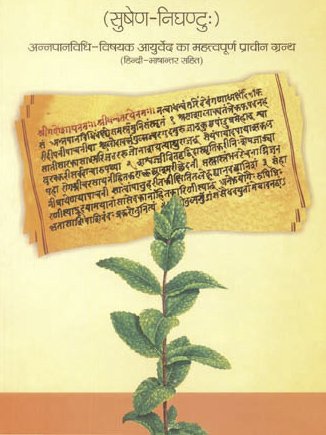clarified butter: 3 definitions
Introduction:
clarified butter means something in Hinduism, Sanskrit. If you want to know the exact meaning, history, etymology or English translation of this term then check out the descriptions on this page. Add your comment or reference to a book if you want to contribute to this summary article.
In Hinduism
Ayurveda (science of life)
Veterinary Medicine (The study and treatment of Animals)
Source: Asian Agri-History: Paśu Āyurvēda (Veterinary Medicine) in GaruḍapurāṇaClarified butter (in Sanskrit: ājya) is part of the diet in the treatment of horses, according to sections on the treatment of Horses (Gajāyurveda or Aśvāyurveda) in the Garuḍapurāṇa.—The diet also plays a role during the treatment because the food imparts a greater strength and vigour to the horses and acts as a general prophylactic against diseases. The following diets are mentioned for the horses in Garuḍapurāṇa, which are according to the doṣa: [...] The diet in pittaja-vikāra: In diseases due to the action of the deranged and aggravated Pitta, the diet should consist of a karṣa (12gm) weight of maṃsarasa (meat soup) mixed with madhu (honey), mudgarasa (green gram soup/ gravy) and ājya (clarified butter). [...]
Agriculture (Krishi) and Vrikshayurveda (study of Plant life)
Source: Asian Agri-History: Drumavichitrikaranam—The Ancient Approach to Plant MutagenesisClarified Butter was used to produce Seedless Fruits: which was one of the technologies known to ancient Indian agriculturists, which presents a safe technology and methodology regarding organic agriculture, according to treatises (such as the Vrikshayurveda). One such technology was to produce seedless fruits: Seeds often impart a bitter taste, thereby causing an unpleasant experience while eating the fruit. Seeds also accelerate fruit deterioration. Hence seedless varieties of fruits have greater economic value. Use of Abrus precatorius (jequirity), Madhuca indica (butter tree), Saussurea lappa (costus), Glycyrrhiza glabra (liquorice), honey, sugar, and clarified butter is said to cause seedlessness.
Source: Shodhganga: Drumavichitrikarnam—Plant mutagenesis in ancient IndiaClarified Butter (denoted by the Sanskrit term Ājya) is used in certain bio-organical recipes for plant mutagenesis, such as dwarfing a plant, according to the Vṛkṣāyurveda by Sūrapāla (1000 CE): an encyclopedic work dealing with the study of trees and the principles of ancient Indian agriculture.—Accordingly, “A plant which is not too tender should be cut at its stem and then slightly burnt. Thereafter it should be smeared with the mixture of clarified butter (ājya), cow dung, rock salt, honey and flesh. A nail should then be driven in the root in a slanting manner. The plant then should be watered beautiful branches and without fail produces fruits even in a dwarf state”.

Āyurveda (आयुर्वेद, ayurveda) is a branch of Indian science dealing with medicine, herbalism, taxology, anatomy, surgery, alchemy and related topics. Traditional practice of Āyurveda in ancient India dates back to at least the first millenium BC. Literature is commonly written in Sanskrit using various poetic metres.
See also (Relevant definitions)
Full-text (+380): Ghrita, Ajya, Sarpis, Pancagavya, Abhighara, Aghara, Haumya, Havis, Khajapa, Homi, Navanitaka, Sruc, Vahnibhogya, Ghee, Petva, Havishya, Sarpishmat, Anunirvapa, Sarpisha, Haiyangavina.
Relevant text
Search found 127 books and stories containing clarified butter; (plurals include: clarified butters). You can also click to the full overview containing English textual excerpts. Below are direct links for the most relevant articles:
Sushruta Samhita, volume 4: Cikitsasthana (by Kaviraj Kunja Lal Bhishagratna)
Chapter VII - The medical treatment of urinary conditions
Chapter IX - The medical treatment of cutaneous affections
Chapter XXVI - The medical treatment for increasing virility
The Devi Bhagavata Purana (by Swami Vijñanananda)
Chapter 43 - On the history of Svāhā < [Book 9]
Chapter 24 - On the worship of the Devī < [Book 8]
Chapter 42 - On the Dhyānam and Stotra of Mahā Lakṣmī < [Book 9]
The Agni Purana (by N. Gangadharan)
Chapter 286 - Collection of medical recipes (kalpa-sāgara)
Chapter 321 - The appeasing rites relating to Aghorāstra
Chapter 24 - Mode of constructing the sacrificial pit and the oblations unto fire
Bharadvaja-srauta-sutra (by C. G. Kashikar)
Manusmriti with the Commentary of Medhatithi (by Ganganatha Jha)
Verse 11.214 < [Section XXIX - Description of the Expiatory Penances]
Verse 2.107 < [Section XX - Non-observance of Holidays]
Verse 11.143 < [Section XVI - Expiation for cutting Trees and other Offences]
Sushruta Samhita, Volume 6: Uttara-tantra (by Kaviraj Kunja Lal Bhishagratna)
Chapter XXVI - Treatment of diseases of the head < [Canto I - Shalakya-tantra (ears, eyes, nose, mouth and throat)]
Chapter IX - Treatment of Vataja Ophthalmia < [Canto I - Shalakya-tantra (ears, eyes, nose, mouth and throat)]
Chapter LII - Symptoms and Treatment of Cough (Kasa) < [Canto III - Kaya-chikitsa-tantra (internal medicine)]
Related products

